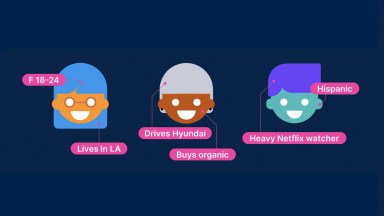When it comes to large purchases, buying a new or used vehicle is near the top of the list. According to Nielsen Scarborough, 43.5 million Americans, or 18% of adults, say they’re planning to purchase or lease a vehicle in the next 12 months.But before they drive their new purchase off the lot, consumers have a lot of decisions to make about the type of vehicle they plan to buy. On the buying spectrum, Nielsen has identified two primary vehicle purchase segments: decided buyers (“Decideds”) and undecided buyers (“Undecideds”).”Decideds,” obviously, have a pretty good sense of what vehicle they want to purchase. “Undecideds” have many decisions to factor in before they shell out dollars for a new ride. “Decideds” and “Undecideds” are different demographically and have different paths to purchase including: length of time in the market and importance of media in the buying process. These differences have implications for how automotive advertisers should best plan their media strategy to influence each stage of the decision-making process.Recently, Nielsen conducted a study in partnership with the Southern California Broadcasters Association to better understand the paths to purchase for vehicle buyers/lessors in Los Angeles and San Diego. While these markets are geographically close, the auto buying habits of consumers in these markets were found to be decidedly different.The analysis found that at any given time, 60% of L.A. vehicle shoppers are decided on the make of the vehicle they plan to buy, while 40% of potential buyers are still undecided. In San Diego, “Decideds” and “Undecideds” are more evenly split at 50%.When Nielsen studied the profile of these shoppers in L.A. and San Diego, it found some interesting demographic differences that can better inform the media planning process. For instance, in L.A., decided buyers are older—between age 37 and 51—equally divided between male and female, have a higher income, and have larger families. On the other hand, undecided buyers in L.A. tend to be younger—between age 20 and 36—more female, and more likely to be Hispanic.In San Diego, things are a bit different.“Decideds” buyers skew younger—Millennials or GenZ with 67% living in larger households. They are ethnically diverse, almost 40% of “Decideds”” identified as Hispanic or Asian/Other. In San Diego, the profile for “Undecideds” is different than in L.A. “Undecideds” in San Diego are older, evenly split male/female and more than half are married with an average yearly household income of nearly $100,000.The study also found differences in how each segment approaches the path to vehicle purchase.”Decideds” in both L.A. and San Diego are quicker to make their decision, with many taking a week or less to purchase a vehicle. In both markets, “Decided” shoppers are confident about the vehicle they want to purchase—52% in L.A. and 47% in San Diego—and up to 60% of them opt to buy a new vehicle rather than a used one. In L.A. and San Diego, “Undecideds” take longer to make a decision—anywhere between one to three months. They also visit multiple dealerships before making a selection.
Media and Auto Buyers
When it comes to vehicle purchases, media plays an important role in the decision-making process. Automotive advertising, regardless of the medium, drives potential shoppers to take action. In L.A., visiting the local dealer was the top action taken by buyers after seeing an ad on local TV, in direct mail, newspapers or on a billboard. However, when an auto ad is heard on the radio, it drives consumers to visit the auto manufacturer’s website.
“Decideds” and “Undecideds” in L.A. use media differently when making purchasing decisions. “Undecided” buyers are more likely to use traditional media like local TV, radio, billboards, newspapers and direct mail when deciding which brand/vehicle to purchase or lease. “Undecided” buyers are less likely to rely on digital, whereas “Decideds” are more likely to seek out and leverage local dealer and auto manufacturer websites when deciding what to purchase.
For vehicle buying, localization is key. Shopping patterns differ by market as consumers move through the buying process. For local dealerships and automotive manufacturers, understanding and evaluating all aspects of a potential buyer’s path to purchase helps uncover the most effective ways to plan and execute a media strategy.Media strategies for “Decided” and “Undecided” buyers must differ. It’s important to understand these distinct consumer groups and to know the platforms they use in their decision-making process. Understanding vehicle purchasers in their local markets and the role each advertising medium plays throughout the purchase path, local auto dealers and car manufacturers can more effectively drive sales.
For more information and to purchase the full report, please contact us.
方法
Los Angeles, San Diego Auto Path to Purchase 2016 Release 2




